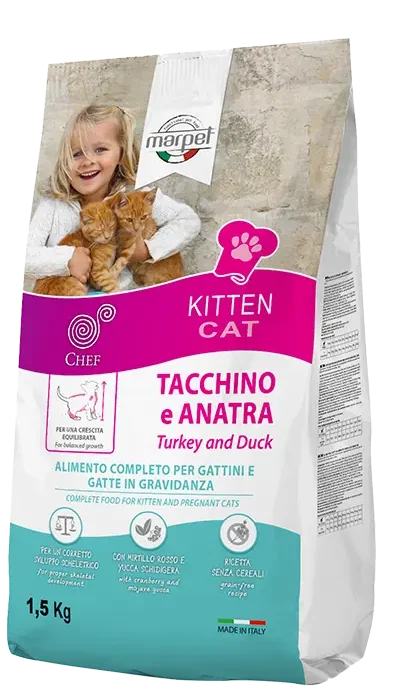Marpet
Chef Grain Free Kitten - Turkey and Duck
Kitten
Regular
Indoor and Outdoor
Grain-Free
Click to reveal the score breakdown
Tap to view ingredients, guaranteed analysis and more
Ingredients
Fresh turkey meat
30%
Processed chicken protein
14%
Peas
Potatoes
Processed duck protein
10%
Turkey and chicken fat
9%
Fish meal
3%
Field bean
Linseed
2%
Dried beet pulp
and also:
Hydrolyzed chicken and pork liver proteins (2%), Yeast, Seaweed flour (0.3%), Yeast products (MOS) (0.2%), Yucca Schidigera (0.033%), Blueberry concentrate (Vaccinium myrtillus L.) (0.016%)
Vitamins and Additives
Vitamin A 21500 IU
Vitamin D3 1450 IU
Vitamin E 200 mg
and also:
Copper (17mg), Iron (34mg), Manganese (68mg), Zinc (77mg), Iodine (3.85mg), Selenium (0.18mg), Taurine (2gr)
Notes
The score is calculated after relocation of fresh meat or fish ingredient(s) as explained in the calculation rule #7 in Chapter 1.
Guaranteed Analysis
Crude Protein
32%
Crude Fat
20%
Crude Fiber
2.5%
Moisture
8%
Crude Ash
7.9%
Calcium
1.1%
Phosphorus
0.95%
Metabolizable Energy
4100 kcal/kg
Notes
The score is calculated after relocation of fresh meat or fish ingredient(s) as explained in the calculation rule #7 in Chapter 1.
Product last updated: April 20, 2024, 2:29 PM
Please hold on while we’re getting the best offers for you
7306




